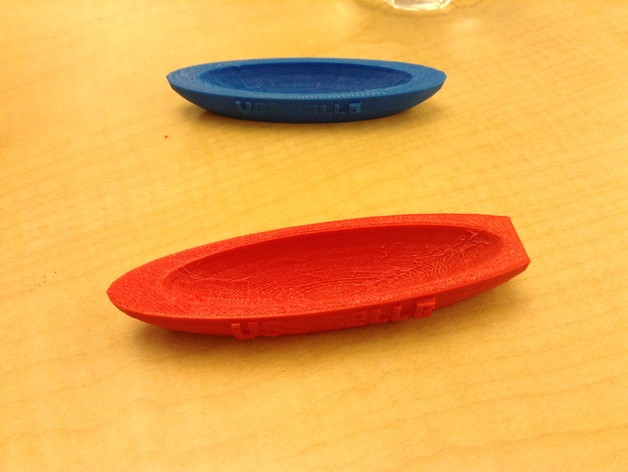
Boats and Buoyancy
thingiverse
This is a detailed lesson plan for teaching physics concepts to students through a hands-on design challenge. Here are some examples of activities and materials that can be used outside of class time: **Outside of Class Time Activities** 1. **Design Challenge**: Encourage students to work on their boat designs at home, using TinkerCAD or other 3D modeling software. 2. **Research and Reading**: Assign students to read articles and watch videos related to the design challenge, such as buoyancy, stability, and wind propulsion. 3. **Prototype Testing**: Allow students to test their prototypes at home, using materials such as cardboard, foam, or other lightweight materials. **Materials** 1. **TinkerCAD Software**: Provide students with access to TinkerCAD software on their personal devices or in the classroom. 2. **3D Printing Materials**: Provide students with access to 3D printing materials, such as PLA or ABS plastic. 3. **Fan and Wind Turbine**: Provide students with a fan and wind turbine to test their designs. 4. **Buoyancy and Density Resources**: Provide students with resources on buoyancy and density, such as the links provided in the references section. **Examples from the Tutorial** 1. **Buoyancy and Density**: Use the "Icebergs and Glaciers" resource to teach students about buoyancy and density. 2. **Wind Power**: Use the "Sailing and Wind Power" resource to teach students about wind power and its applications. 3. **Forces in Motion**: Use the "Bill Nye Forces in Motion" video to teach students about forces in motion. **Class Time Activities** 1. **Design Team Expert**: Assign students roles such as Design Team Expert, Materials Engineer, Architectural Engineer, or Mechanical Engineer. 2. **Imagine: Develop Possible Solutions**: Have students brainstorm solutions individually and then in groups. 3. **Plan: Select a Promising Solution**: Have students combine their ideas into a single promising solution, focused on the previously determined criteria and constraints. 4. **Create: Build a Prototype**: Reinforce the use of TinkerCAD and encourage students to produce a minimally functional product - something that is testable. 5. **Test and Evaluate Prototype**: Give students access to a variety of materials to test their design. Allow students to create their own environment and procedure for testing. 6. **Improve: Redesign as Needed**: Return to TinkerCAD to modify the design based on the test results. **Assessment** 1. **Exit Ticket**: Have students complete an exit ticket to check for understanding and misconceptions, before the next iteration. 2. **Presentations**: Allow students to present their designs in various formats, such as slideshow, document reader, poster, or video. This is a detailed lesson plan that can be adapted to fit the needs of your classroom and students. Be sure to provide clear instructions and guidance throughout the process. Good luck!
With this file you will be able to print Boats and Buoyancy with your 3D printer. Click on the button and save the file on your computer to work, edit or customize your design. You can also find more 3D designs for printers on Boats and Buoyancy.
